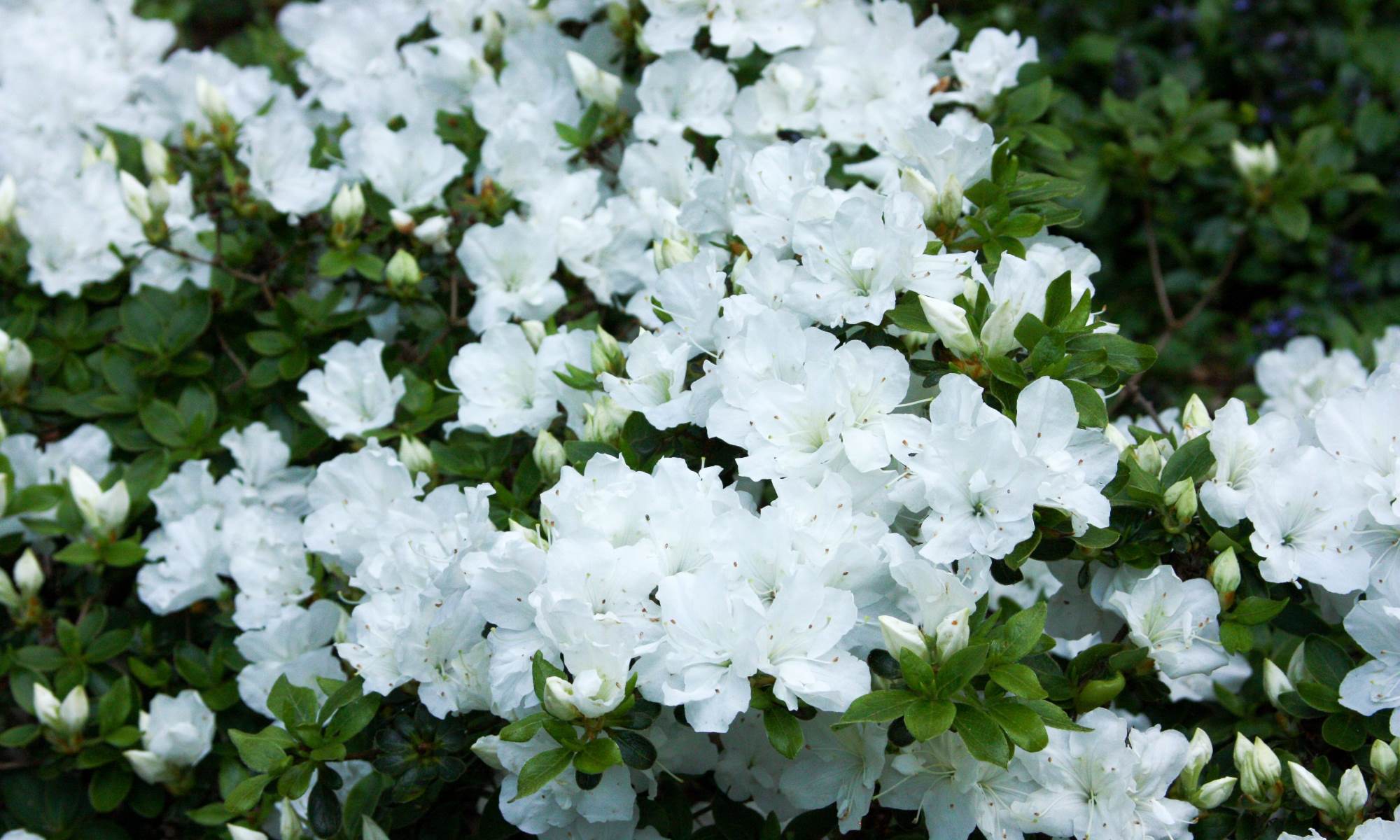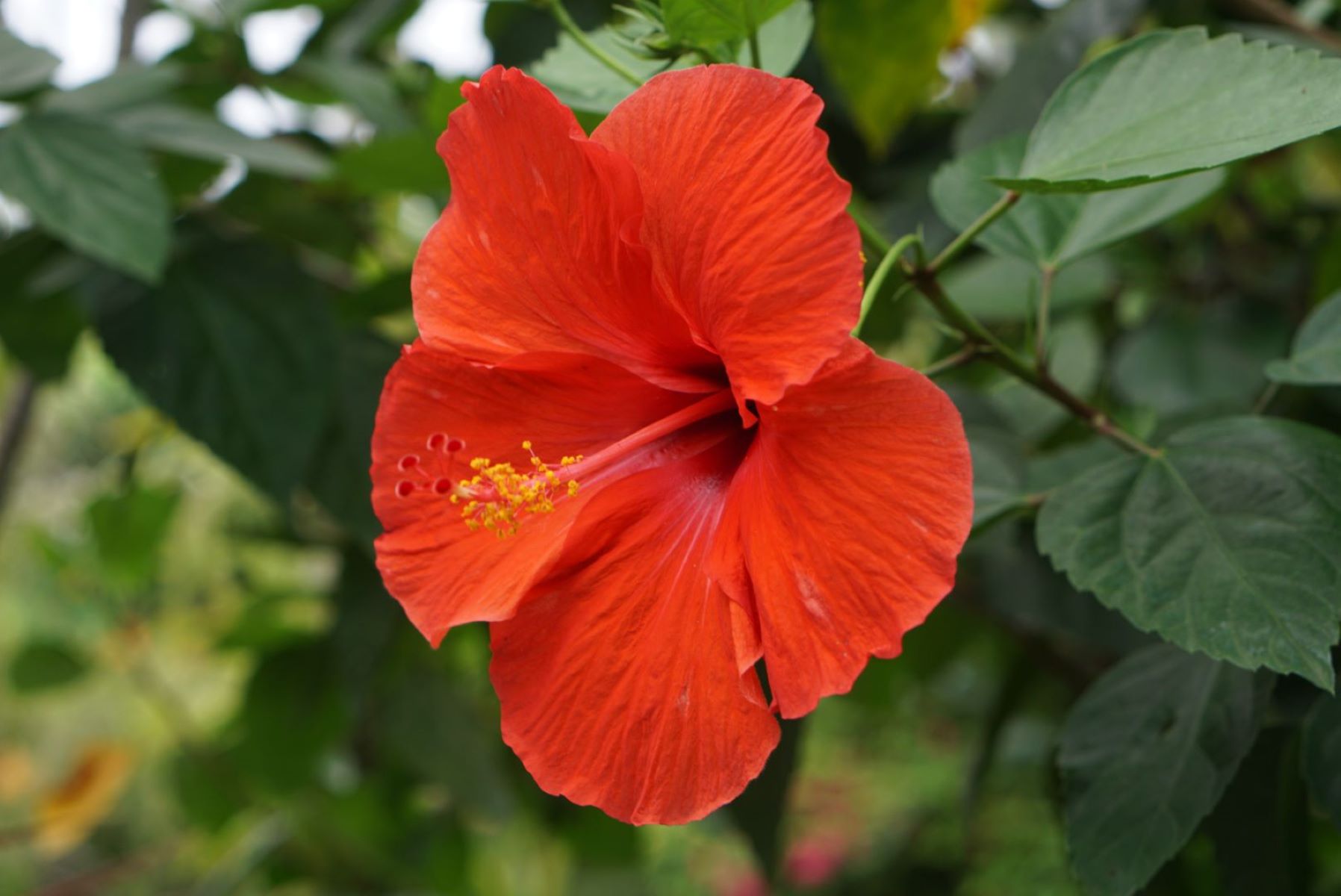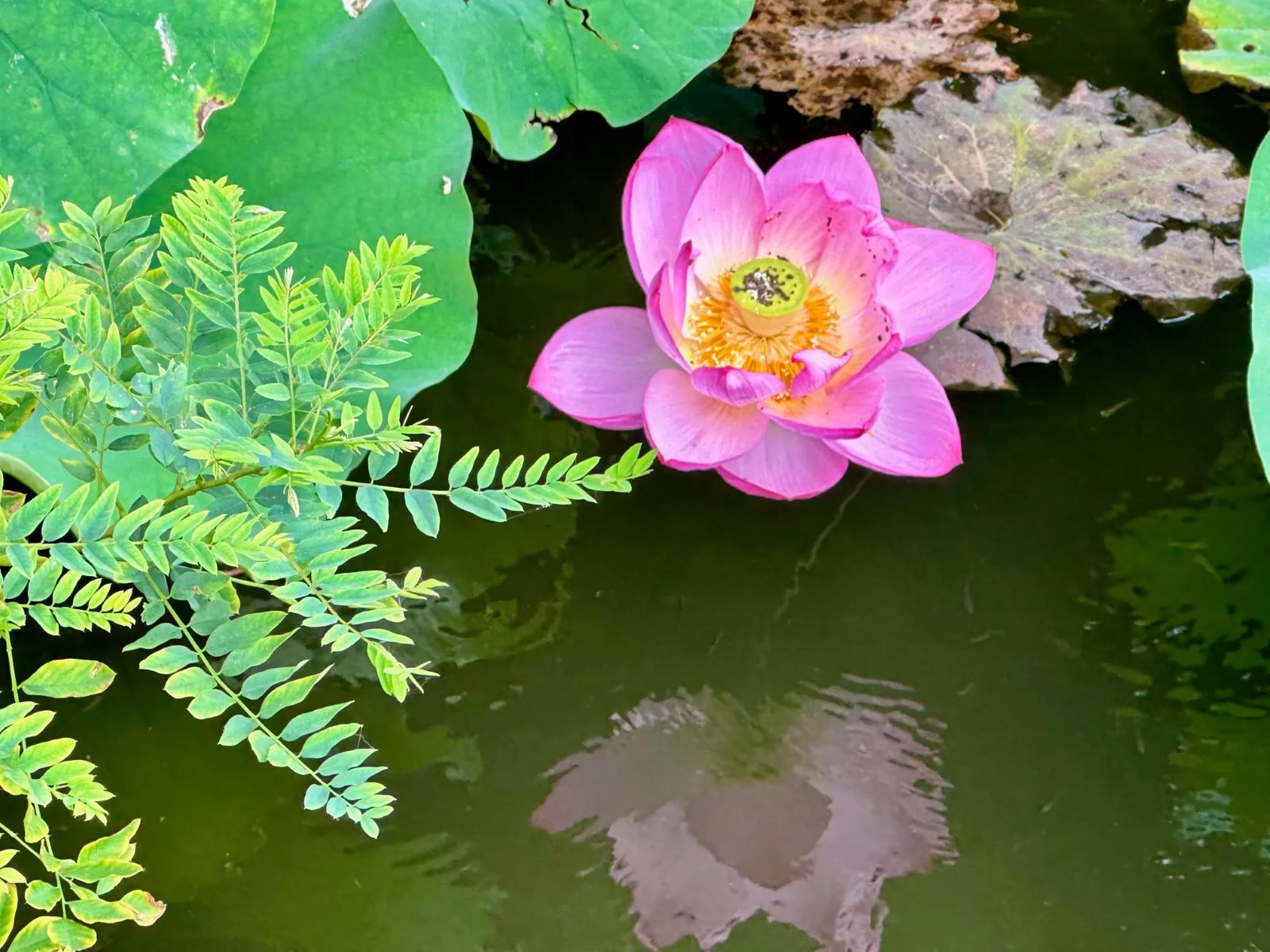Home>Home and Garden>The Appeal Of Azaleas And Rhododendrons: Exploring Their Short But Spectacular Blooming Period


Home and Garden
The Appeal Of Azaleas And Rhododendrons: Exploring Their Short But Spectacular Blooming Period
Published: February 19, 2024
Discover the allure of azaleas and rhododendrons in your home and garden. Explore their brief yet breathtaking blooming season and enhance your outdoor space.
(Many of the links in this article redirect to a specific reviewed product. Your purchase of these products through affiliate links helps to generate commission for Regretless.com, at no extra cost. Learn more)
Table of Contents
Introduction
Azaleas and rhododendrons are renowned for their breathtaking beauty and vibrant colors, making them highly sought-after additions to any garden. These stunning flowering shrubs have captivated the hearts of garden enthusiasts and nature lovers alike, drawing attention with their short but spectacular blooming period. As the warmer months approach, these botanical gems burst into a kaleidoscope of hues, adorning gardens with their mesmerizing floral displays.
The allure of azaleas and rhododendrons lies not only in their visual appeal but also in the sense of joy and tranquility they bring to outdoor spaces. Their delicate blooms, ranging from soft pastels to rich, intense shades, create a picturesque scene that evokes a sense of serenity and natural splendor. Whether planted as standalone specimens or integrated into a diverse landscape, these flowering shrubs have an undeniable charm that captivates onlookers and instills a profound appreciation for the wonders of nature.
As we delve into the world of azaleas and rhododendrons, it becomes evident that their short blooming period is a defining characteristic that adds to their allure. While their flowering season may be brief, it is undeniably impactful, leaving a lasting impression on all who behold their resplendent blossoms. Understanding the nuances of their blooming cycle and learning how to maximize their display can elevate the gardening experience, allowing enthusiasts to revel in the ephemeral yet enchanting beauty of these botanical treasures.
In the following sections, we will explore the captivating appeal of azaleas and rhododendrons, gaining insight into the factors that make them such coveted additions to gardens. Additionally, we will delve into the intricacies of their short blooming period, offering valuable tips for optimizing their spectacular display. Furthermore, we will discuss the process of selecting the right varieties to suit specific garden environments, ensuring that these exquisite flowering shrubs thrive and flourish in their chosen settings. Join us on this journey as we celebrate the ephemeral splendor of azaleas and rhododendrons, discovering the secrets to unlocking their full potential in the garden landscape.
Read more: How To Measure The Inseam On Shorts
The Allure of Azaleas and Rhododendrons
Azaleas and rhododendrons possess an irresistible allure that transcends their physical beauty, captivating the hearts and minds of gardening enthusiasts and nature admirers worldwide. These exquisite flowering shrubs are celebrated for their ability to transform outdoor spaces into enchanting havens of color and charm. The allure of azaleas and rhododendrons lies in their remarkable visual impact, as their blossoms unfurl in a breathtaking array of shades, ranging from delicate pastels to intense, vibrant hues. Their captivating blooms, often adorned with intricate patterns and delicate textures, create a mesmerizing spectacle that evokes a sense of wonder and tranquility.
Beyond their aesthetic appeal, azaleas and rhododendrons hold a profound symbolic significance, representing diverse cultural meanings and emotional expressions. In various traditions, these flowering shrubs are associated with sentiments of love, gratitude, and renewal, adding a layer of emotional depth to their already captivating presence. Their fleeting blooming period serves as a poignant reminder of life's transient beauty, prompting observers to cherish the ephemeral moments of natural splendor.
Moreover, the allure of azaleas and rhododendrons extends beyond their visual impact, encompassing their ability to attract and support diverse wildlife. These flowering shrubs serve as vital sources of nectar for pollinators, including bees, butterflies, and hummingbirds, fostering a harmonious ecosystem within the garden. The gentle hum of pollinators and the graceful flutter of butterflies add an enchanting dimension to the garden landscape, enhancing the overall allure of these botanical treasures.
Furthermore, the versatility of azaleas and rhododendrons contributes to their enduring allure, as they thrive in various garden settings, from woodland landscapes to formal garden borders. Their adaptability to different soil types and light conditions makes them accessible choices for gardeners seeking to introduce captivating floral displays to their outdoor spaces. Whether planted as standalone specimens or integrated into mixed borders, these flowering shrubs infuse the garden with a sense of natural elegance and timeless charm.
In essence, the allure of azaleas and rhododendrons transcends their ephemeral blooming period, encompassing their visual splendor, symbolic significance, ecological contributions, and versatile appeal. These botanical marvels continue to captivate and inspire, inviting enthusiasts to embrace the fleeting yet profound beauty of nature's creations.
Understanding Their Short Blooming Period
Azaleas and rhododendrons are renowned for their short but spectacular blooming period, a defining characteristic that adds to their allure. Understanding the intricacies of this brief yet impactful flowering season is essential for garden enthusiasts seeking to maximize the visual impact of these botanical treasures.
The short blooming period of azaleas and rhododendrons typically spans several weeks, varying slightly depending on the specific variety and environmental conditions. This ephemeral display, often heralded as a fleeting burst of natural splendor, is a testament to the cyclical rhythm of nature. As the warmer months herald the arrival of spring, these flowering shrubs awaken from their winter slumber, unfurling their vibrant blooms in a breathtaking showcase of color and beauty.
The duration of their blooming period is influenced by a myriad of factors, including climate, temperature, and daylight exposure. In regions with milder climates, the blooming season may be prolonged, allowing for an extended opportunity to revel in the captivating floral display. Conversely, in areas with more pronounced seasonal changes, the blooming period may be relatively condensed, making each fleeting blossom all the more precious.
Furthermore, the specific variety of azaleas and rhododendrons plays a significant role in determining the duration and timing of their blooming period. Early-blooming varieties, such as the Rhododendron mucronulatum, often herald the arrival of spring with their delicate blossoms, while late-blooming cultivars, including the Rhododendron 'PJM', extend the floral spectacle into the early days of summer. By carefully selecting a diverse range of varieties, gardeners can orchestrate a continuous succession of blooms, ensuring a prolonged and dynamic display throughout the blooming season.
Understanding the short blooming period of azaleas and rhododendrons empowers garden enthusiasts to appreciate the transient yet profound beauty of these flowering shrubs. It encourages a mindful approach to savoring each fleeting blossom, fostering a deep sense of connection with the ever-changing tapestry of nature. By embracing the ephemeral nature of their blooming period, enthusiasts can cultivate a profound appreciation for the cyclical rhythms of the natural world, finding joy in the transient yet exquisite moments of floral splendor.
In essence, the short blooming period of azaleas and rhododendrons serves as a poignant reminder of the fleeting nature of beauty, prompting observers to cherish each delicate blossom as a precious gift from the natural world.
Tips for Maximizing Their Spectacular Display
-
Strategic Planting: When planning the placement of azaleas and rhododendrons in your garden, consider their specific sunlight and soil requirements. Most varieties thrive in dappled shade or partial sunlight, making them ideal candidates for woodland gardens or areas with filtered light. Ensuring well-draining, acidic soil with ample organic matter is crucial for their optimal growth and blooming.
-
Pruning and Maintenance: Regular pruning is essential for shaping the shrubs and promoting healthy growth. Prune immediately after the blooming period to avoid cutting off next year's flower buds. Remove dead or diseased branches to maintain the overall health and vigor of the plants.
-
Mulching: Applying a layer of organic mulch around the base of azaleas and rhododendrons helps retain moisture, regulate soil temperature, and suppress weed growth. Additionally, organic mulch gradually decomposes, enriching the soil with essential nutrients and contributing to the overall health of the plants.
-
Fertilization: Use a balanced, slow-release fertilizer specifically formulated for acid-loving plants. Apply the fertilizer in early spring before new growth emerges, following the manufacturer's recommendations for proper dosage and application methods. Avoid excessive fertilization, as it can lead to nutrient imbalances and adversely affect the blooming potential of the shrubs.
-
Watering: Adequate moisture is crucial for the health and blooming success of azaleas and rhododendrons. During dry periods, ensure consistent watering, especially for newly planted shrubs. Avoid overwatering, as waterlogged soil can lead to root rot and other detrimental conditions.
-
Companion Planting: Pairing azaleas and rhododendrons with complementary companion plants can enhance the visual impact of their blooming display. Consider incorporating shade-loving perennials, such as hostas, ferns, and astilbes, to create a harmonious and diverse garden landscape.
-
Seasonal Interest: Introduce a variety of azalea and rhododendron cultivars with staggered blooming periods to extend the floral display throughout the season. By carefully selecting early, mid, and late-blooming varieties, you can orchestrate a continuous succession of blooms, ensuring a prolonged and dynamic showcase of color in your garden.
-
Protective Measures: In regions prone to late frosts or extreme temperature fluctuations, consider providing protective coverings, such as burlap or frost cloth, to shield the tender buds from potential damage. Monitoring weather forecasts and taking preemptive measures can safeguard the blooming potential of the shrubs.
By implementing these tips, garden enthusiasts can maximize the spectacular display of azaleas and rhododendrons, creating a captivating tapestry of color and beauty that celebrates the ephemeral yet profound splendor of these botanical treasures.
Choosing the Right Varieties for Your Garden
Selecting the right varieties of azaleas and rhododendrons is a pivotal step in creating a vibrant and visually captivating garden landscape. With a diverse array of cultivars available, each boasting unique characteristics and blooming patterns, garden enthusiasts have the opportunity to curate a stunning tapestry of colors and textures that harmonize with their specific garden environment. When embarking on the selection process, several key factors should be considered to ensure the successful integration of these flowering shrubs into the garden landscape.
Consider Climate and Hardiness
The first consideration when choosing azaleas and rhododendrons is the climate and hardiness zone of the garden. Different varieties exhibit varying degrees of cold and heat tolerance, making it essential to select cultivars that are well-suited to the specific climatic conditions of the region. Consult the USDA Hardiness Zone map to identify the appropriate varieties that thrive in the local climate, ensuring their resilience to temperature fluctuations and seasonal changes.
Assess Blooming Period and Duration
Understanding the blooming period and duration of different azalea and rhododendron varieties is crucial for orchestrating a continuous succession of blooms throughout the season. Early-blooming cultivars, such as the Rhododendron mucronulatum, herald the arrival of spring with their delicate blossoms, while late-blooming varieties, including the Rhododendron 'PJM', extend the floral spectacle into the early days of summer. By strategically selecting a mix of early, mid, and late-blooming varieties, gardeners can ensure a prolonged and dynamic showcase of color in their garden.
Evaluate Size and Growth Habit
Consider the mature size and growth habit of the chosen varieties to determine their suitability for the intended garden space. Compact, low-growing cultivars are ideal for border plantings, rock gardens, and container arrangements, while taller, more expansive varieties make striking focal points or additions to woodland landscapes. Understanding the growth characteristics of each cultivar allows for thoughtful placement and optimal utilization of available garden space.
Explore Color and Floral Diversity
Azaleas and rhododendrons offer a diverse palette of colors, ranging from soft pastels to vibrant, intense hues. When selecting varieties, consider the desired color scheme and the potential for creating captivating color combinations within the garden landscape. Additionally, explore the diversity of floral forms and textures offered by different cultivars, from single and double blooms to ruffled petals and intricate patterns, to add visual interest and depth to the overall design.
Embrace Diversity and Ecological Benefits
Embracing diversity in azalea and rhododendron selection not only enhances the visual appeal of the garden but also contributes to the ecological vitality of the landscape. By incorporating a variety of cultivars that attract and support pollinators, such as bees, butterflies, and hummingbirds, gardeners can foster a thriving ecosystem within their outdoor spaces. Furthermore, selecting native or regionally adapted varieties promotes biodiversity and strengthens the resilience of the garden environment.
In essence, choosing the right varieties of azaleas and rhododendrons involves a thoughtful and holistic approach that considers climate suitability, blooming characteristics, growth habits, color diversity, and ecological contributions. By carefully curating a diverse selection of cultivars that harmonize with the garden landscape, enthusiasts can create a captivating and sustainable haven of natural beauty that celebrates the ephemeral yet profound splendor of these botanical treasures.
Conclusion
In conclusion, the allure of azaleas and rhododendrons transcends their ephemeral blooming period, encompassing their visual splendor, symbolic significance, ecological contributions, and versatile appeal. These botanical marvels continue to captivate and inspire, inviting enthusiasts to embrace the fleeting yet profound beauty of nature's creations.
As we reflect on the captivating appeal of azaleas and rhododendrons, it becomes evident that their short blooming period is a defining characteristic that adds to their allure. Understanding the intricacies of this brief yet impactful flowering season is essential for garden enthusiasts seeking to maximize the visual impact of these botanical treasures. Their delicate blooms, ranging from soft pastels to rich, intense shades, create a picturesque scene that evokes a sense of serenity and natural splendor. Whether planted as standalone specimens or integrated into a diverse landscape, these flowering shrubs have an undeniable charm that captivates onlookers and instills a profound appreciation for the wonders of nature.
Moreover, the versatility of azaleas and rhododendrons contributes to their enduring allure, as they thrive in various garden settings, from woodland landscapes to formal garden borders. Their adaptability to different soil types and light conditions makes them accessible choices for gardeners seeking to introduce captivating floral displays to their outdoor spaces. The gentle hum of pollinators and the graceful flutter of butterflies add an enchanting dimension to the garden landscape, enhancing the overall allure of these botanical treasures.
Understanding the short blooming period of azaleas and rhododendrons empowers garden enthusiasts to appreciate the transient yet profound beauty of these flowering shrubs. It encourages a mindful approach to savoring each fleeting blossom, fostering a deep sense of connection with the ever-changing tapestry of nature. By embracing the ephemeral nature of their blooming period, enthusiasts can cultivate a profound appreciation for the cyclical rhythms of the natural world, finding joy in the transient yet exquisite moments of floral splendor.
In essence, the short blooming period of azaleas and rhododendrons serves as a poignant reminder of the fleeting nature of beauty, prompting observers to cherish each delicate blossom as a precious gift from the natural world. By carefully curating a diverse selection of cultivars that harmonize with the garden landscape, enthusiasts can create a captivating and sustainable haven of natural beauty that celebrates the ephemeral yet profound splendor of these botanical treasures.













